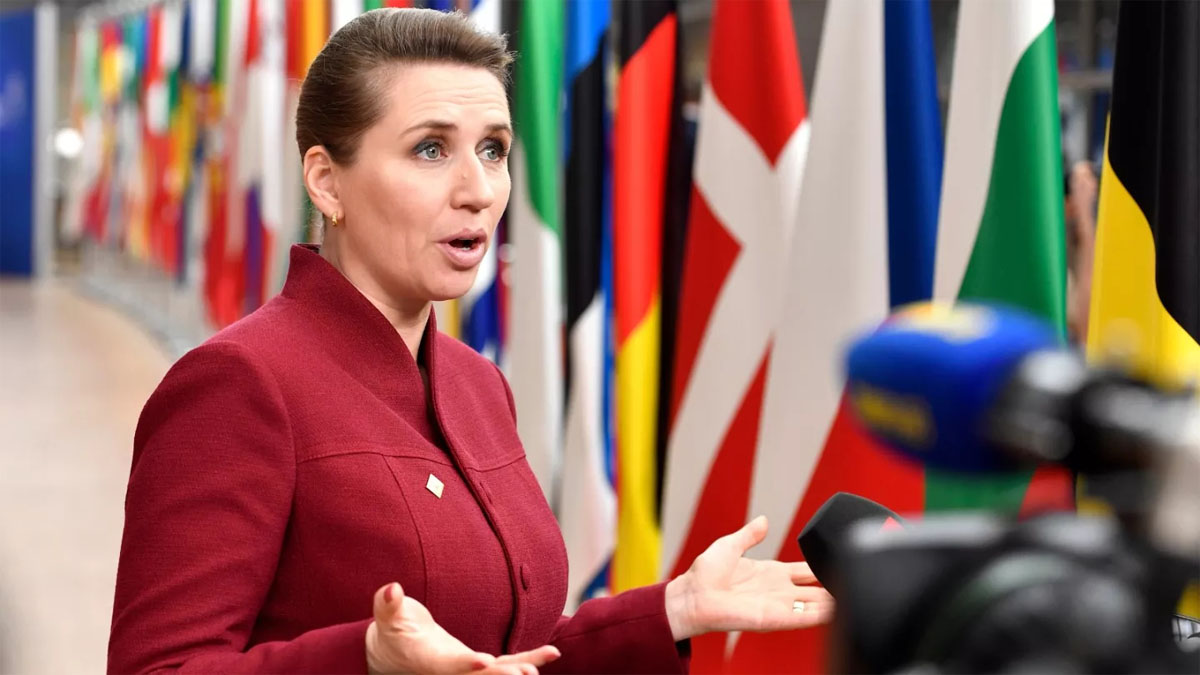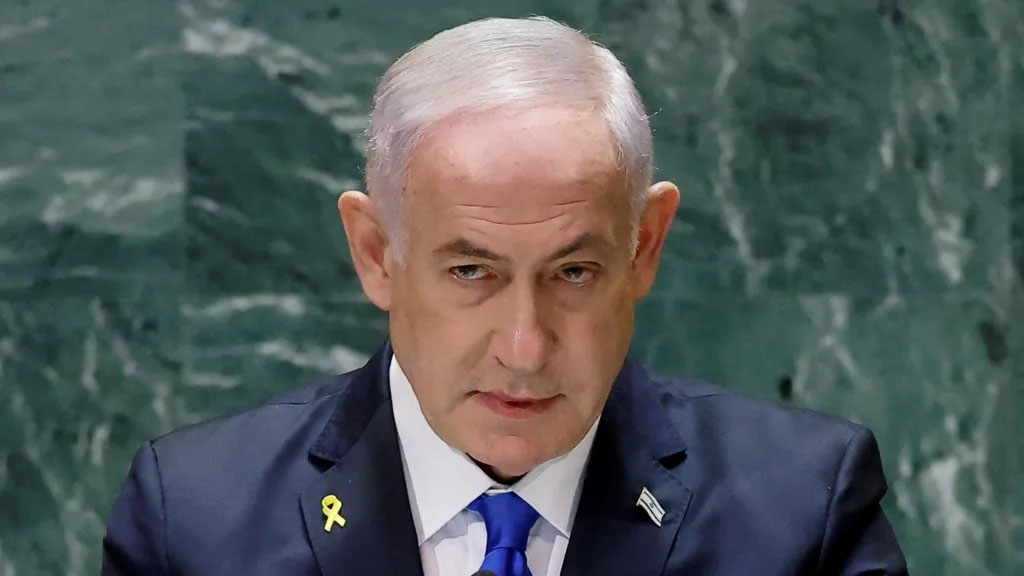International
Man attacks Danish PM in Copenhagen

Man attacks Danish PM in Copenhagen
Denmark PM Mette Frederiksen has been left “shocked” after being attacked in the street in Copenhagen, her office says.
The assault took place on a square in the centre of the city where a man walked up to her and hit her.
The attacker has been arrested.
European Commission chief Ursula von der Leyen called it a “despicable act, which goes against everything we believe in and fight for in Europe”.
“Prime Minister Mette Frederiksen was beaten on Friday evening at Kultorvet in Copenhagen by a man who was subsequently arrested. The prime minister is shocked by the incident,” the prime minister’s office said in a statement without giving further detail.
Police said they had arrested a man and were investigating the incident, but declined to say more.
There is no word on a motive yet.
Two witnesses, Marie Adrian and Anna Ravn, told local newspaper BT that they had seen the attack.
“A man came by in the opposite direction and gave her a hard shove on the shoulder, causing her to fall to the side,” the two women told the newspaper.
READ ALSO:
- UN adds Israel to list of militaries committing violations against children
- 2026 W’Cup: Super Eagles walk tight rope, play 1-1 with South Africa in Uyo
- Sanwo-Olu opens SDGs multi-storey Sickle Cell Centre at LASUTH
They said that while it was a “strong push” the prime minister did not hit the ground.
She then sat down at a café, they added.
The attack comes two days before Denmark votes in the EU election.
Ms Frederiksen, leader of Denmark’s Social Democrats, had earlier taken part in a European election event with her party’s lead candidate Christel Schaldemose, Denmark’s TV2 reports.
The Social Democrats are the biggest party in Denmark’s coalition government. They still lead the polls, but their support has fallen back considerably in recent months.
Danish Environment Minister Magnus Heunicke said on X: “Mette is naturally shocked by the attack. I must say that it shakes all of us who are close to her.”
EU chief Charles Michel said on X that he was “outraged”.
“I strongly condemn this cowardly act of aggression,” he said.
The attack comes less than a month after Slovak PM Robert Fico was shot several times as he greeted supporters. He survived and has since undergone surgery.
Ms Frederiksen, 46, became prime minister in 2019 after taking over as leader of the centre-left Social Democrats four years earlier. This made her the youngest prime minister in Danish history.
Soon after, she became embroiled in a spat with then-President Donald Trump after she rebuffed his idea of the US buying Greenland.
Mr Trump called her “nasty” after she dismissed the suggestion of such a land deal as “absurd”.
In 2022, Ms Frederiksen was heavily criticised by a commission investigating her government’s decision to cull millions of mink during the Covid pandemic.
Man attacks Danish PM in Copenhagen
BBC
International
Relief as Israel agrees to ceasefire with Lebanon

Relief as Israel agrees to ceasefire with Lebanon
Israeli Prime Minister Benjamin Netanyahu has said he will bring a US-brokered proposal for a ceasefire with Hezbollah in Lebanon to his government for approval as soon as Tuesday evening.
He said in a televised address that he would put “a ceasefire outline” to ministers “this evening”.
He however did not say how long the truce would last, noting “the length of the ceasefire depends on what happens in Lebanon”.
But it later learnt that the ceasefire would is for 60 days.
During the period, Hezbollah fighters are expected to retreat 40 kilometres from Israel’s border, with Israeli ground forces withdrawing from Lebanese territory.
“If Hezbollah violates the agreement and attempts to rearm, we will strike,” Netanyahu warned.
Key Israel backer the United States has led ceasefire efforts for Lebanon alongside France.
US President Joe Biden is optimistic the deal will lead to a “permanent cessation of hostilities”.
Biden added that the US would lead another push for a ceasefire in Gaza.
“In full coordination with the United States, we are maintaining full military freedom of action,” Netanyahu said, outlining the seven-front war Israel says it faces in Gaza, the occupied West Bank, Yemen, Iraq, Syria, Lebanon and Iran.
Even as Netanyahu spoke about the ceasefire, the Israeli military carried out multiple strikes on heart of Beirut while the army said some 15 projectiles had entered Israeli airspace from Lebanon.
Demonstrators raise placards and Israeli flags during a protest in front of the Israeli Defence Ministry in the coastal city Tel Aviv on November 26, 2024, against a possible ceasefire with Hezbollah in Lebanon. – Israel’s security cabinet has started discussing a proposed ceasefire deal in its war with Hezbollah in Lebanon, an Israeli official confirmed to AFP on November 26. (Photo by Jack GUEZ / AFP)
The war in Lebanon escalated after nearly a year of limited cross-border exchanges of fire begun by Hezbollah, which said it was acting in support of Hamas after its October 7, 2023 attack on Israel, which sparked the war in Gaza.
The war has killed at least 3,823 people in Lebanon since October 2023, according to the health ministry, most of them since September.
On the Israeli side, the hostilities have killed at least 82 soldiers and 47 civilians, authorities say.
Netanyahu said the ceasefire would allow Israel to focus on “the Iranian threat” and ramp up its fight against Hamas in Gaza.
“With Hezbollah out of the picture, Hamas is left on its own,” he said.
“We will increase our pressure on Hamas and that will help us in our sacred mission of releasing our hostages.”
During last year’s Hamas attack, militants took 251 hostages, of whom 97 are still held in Gaza, including 34 the army has declared dead.
International
Israeli strikes pound central Beirut, suburbs

Israeli strikes pound central Beirut, suburbs
BEIRUT: Israeli strikes pounded a densely-populated part of the Lebanese capital and its southern suburbs on Tuesday, hours ahead of an anticipated announcement of a ceasefire ending hostilities between Israel and Lebanese armed group Hezbollah.
A strike on Beirut hit the Noueiri district with no evacuation warning and killed at least one person, Lebanon’s health ministry said in a preliminary toll.
READ ALSO:
- French football star, Paul Pogba’s blackmail trial begin in Paris
- French football star, Paul Pogba’s blackmail trial begin in Paris
- Vigilante arrested in Anambra for robbery
Minutes later, at least 10 Israeli strikes hit Beirut’s southern suburbs. They began approximately 30 minutes after the Israeli military issued evacuation orders for 20 locations in the area, the largest such warning yet.
As the strikes were under way, Israel’s military spokesperson Avichay Adraee said the air force was conducting a “widespread attack” on Hezbollah targets across the city.
Israeli strikes pound central Beirut, suburbs
ARAB NEWS
International
Over $100m wasted, Trump mocks Democrats for targeting him

Over $100m wasted, Trump mocks Democrats for targeting him
Former U.S. President Donald Trump has fiercely criticised the legal cases brought against him, calling them “empty and lawless”.
He accused Democrats of weaponising the judicial system to target him as a political opponent.
In a strongly worded statement, Trump alleged that over $100 million in taxpayer money had been wasted in what he described as a politically driven effort to undermine his influence.
“Nothing like this has ever happened in our Country before,” he said, pointing to high-profile prosecutors, including Georgia’s Fani Willis and New York Attorney General Letitia James, as key figures in what he called a “political hijacking.”
READ ALSO:
- PH refinery: 200 trucks will load petroleum products daily, says Presidency
- US-based Nigerians get 30-year sentence over $3.5m romance scam
- 4 Nigerians arrested in Libya for alleged drug trafficking, infection charges
Trump also accused Willis of colluding with Nathan Wade, whom he described as “her lover” and lacking the experience to handle such cases.
He claimed Wade was paid “millions,” allegedly enabling lavish trips and cruises.
Letitia James, who is pursuing a civil fraud case against Trump, was also criticised.
He claimed she had campaigned on a promise to “get Trump” in her bid for office, an action he labelled “unethical” and “probably illegal.”
Trump also mentioned Manhattan District Attorney Alvin Bragg, alleging that Bragg initially resisted prosecuting him but was pressured into action by the Justice Department and the Democratic Party.
Describing the series of legal actions as a “low point in the history of our Country,” Trump maintained his resolve, declaring: “I persevered, against all odds, and WON.”
Over $100m wasted, Trump mocks Democrats for targeting him
-

 metro22 hours ago
metro22 hours agoBREAKING: Port Harcourt refinery begins operation
-

 Business3 days ago
Business3 days agoJust in: Dangote refinery reduces petrol price for marketers
-

 metro2 days ago
metro2 days ago40-foot container falls on car in Lagos
-

 Politics3 days ago
Politics3 days ago2027: Lagos Speaker, Obasa joins gov race, may battle Seyi Tinubu, others
-

 Politics2 days ago
Politics2 days agoLagos 2027: Seyi Tinubu campaign team releases his life documentary
-

 International2 days ago
International2 days agoTrump to sack 15,000 transgender officers from U.S. military: Report
-

 Entertainment2 days ago
Entertainment2 days agoPolygamy best form of marriage for Africa – Okey Bakassi
-

 Education15 hours ago
Education15 hours agoUS University opens 2025 scholarships for international students




